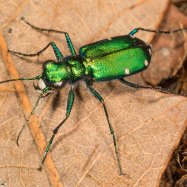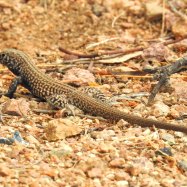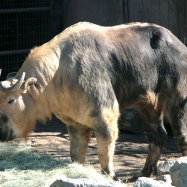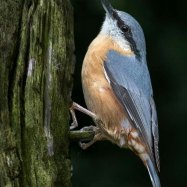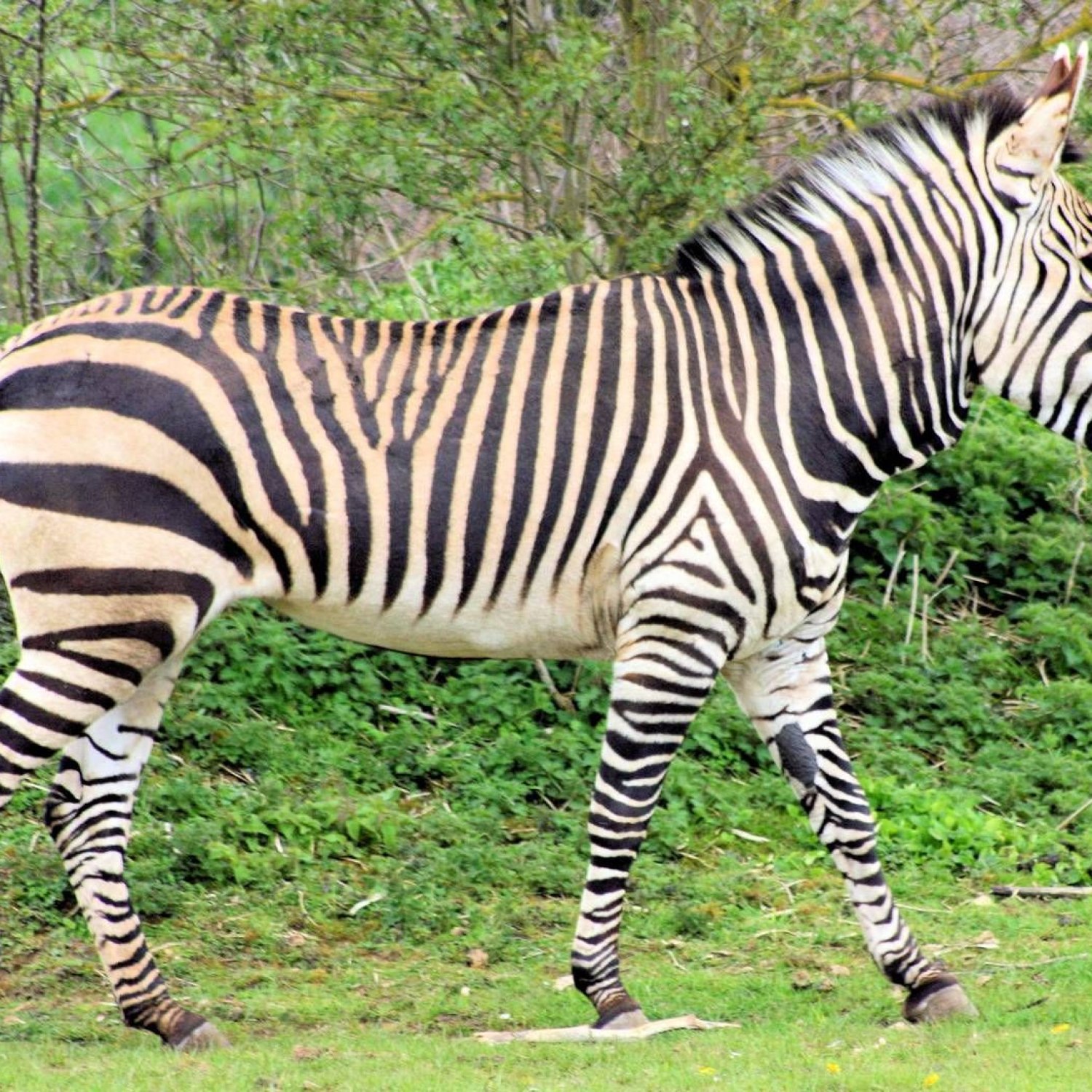
Zebra
2.2 to 2.6 meters
Zebra, the strikingly beautiful animal with its black and white stripes, is a member of the horse family and can be found in Eastern, southern, and southwestern Africa. These majestic creatures can reach lengths of 2.2 to 2.6 meters and are known for their horse-like body shape. They are social animals that live in herds and have excellent memory and communication skills. Next time you see a zebra, remember these fascinating facts about this iconic animal.
Animal Details Summary:
Common Name: Zebra
Kingdom: Animalia
Habitat: Grasslands, savannas, and woodlands
The Beautiful and Mysterious World of Zebras
Have you ever seen a zebra galloping across the vast grasslands of Africa, its black and white stripes shining under the warm African sun? If so, you must have been mesmerized by its unique beauty and elegance. Zebras are undoubtedly one of the most recognizable and fascinating animals in the world. With their hypnotizing stripes and graceful movements, these creatures have captured the hearts and minds of people for centuries. But there is more to zebras than just their striking appearance Zebra. In this article, we will explore the mysterious world of zebras and uncover the secrets behind their mesmerizing stripes.A Closer Look at Zebras
Zebras are members of the Equidae family, which also includes horses and donkeys. There are three main species of zebras: the plains zebra (Equus quagga), the mountain zebra (Equus zebra), and the Grevy's zebra (Equus grevyi). The plains zebra, also known as the common zebra, is the most widespread and well-known species.The Scientific Name
The scientific name of the zebra is Equus quagga. The genus name, Equus, comes from the Latin word for "horse," while the species name, quagga, comes from the unique sound that zebras make. Interestingly, the quagga was once thought to be a separate species, but it is now recognized as a subspecies of the plains zebra.Classification and Habitat
Zebras belong to the animal kingdom Animalia and the phylum Chordata, which includes all animals with a backbone. They are classified as mammals in the class Mammalia and the order Perissodactyla, which refers to animals with an odd number of toes Zorse. Zebras are herbivores, meaning they feed on plants, and they can be found in the grasslands, savannas, and woodlands of sub-Saharan Africa.These striking animals are native to Africa and are mostly found in eastern, southern, and southwestern Africa. The specific location of zebras varies depending on the species. The mountain zebra is found in South Africa, Namibia, and Angola, while the Grevy's zebra is mostly found in Kenya and Ethiopia.
The Black and White Stripes
The most distinct and recognizable feature of zebras is their black and white stripes. These stripes cover the zebra's entire body, including its mane, tail, and legs. One cannot help but wonder: why do zebras have stripes? Scientists have long been puzzled by this question, and there are several theories behind the purpose of these stripes.The most widely accepted theory is that the stripes serve as camouflage for the zebra. In the African savannas, where predators are always on the hunt, blending into the surroundings can be a matter of life and death. The stripes on a zebra's body help it blend in with the tall grass, making it harder for predators to spot them. This is known as disruptive coloration, as it breaks up the outline of the animal, making it more difficult for predators to recognize the zebra as a whole.
Another theory suggests that the stripes play a role in temperature regulation. The black and white stripes may create a pattern of light and dark areas, which could help regulate the zebra's body temperature in the hot African sun. The black stripes absorb more heat, while the white stripes reflect light, helping to keep the zebra cool.
Some experts also believe that stripes may play a role in social interactions between zebras. Each zebra has a unique pattern of stripes, and it's possible that they use this to identify members of their herd. This could also be a way for zebras to recognize their own offspring in a herd of similar-looking individuals.
The Zebra's Beautiful Body
Zebras have a body shape similar to that of a horse. They have a long, muscular body with slender legs and a large head. They can reach lengths of 2.2 to 2.6 meters and heights of 1.25 to 1.5 meters. Adult zebras weigh between 350 to 450 kg. Female zebras tend to be slightly smaller than males.Their hooves are specially adapted for life on the African savannas. Zebras have hard, sturdy hooves that help them traverse the rough terrain, and they can also kick with great force if threatened by a predator. This makes them perfect prey for lions, hyenas, and other predators that roam the African plains.
Surviving on a Herbivore Diet
As mentioned earlier, zebras are herbivores, meaning they feed on plants. Their diet consists mainly of grass, but they also feed on leaves, shoots, and bark. One of the most remarkable things about zebras is their ability to digest tough, fibrous plant material. They have a large digestive system and constantly chew on their food to break it down into smaller pieces, known as cud.Their teeth are also specially adapted for their herbivorous diet. Zebras have strong incisors for cropping the grass and powerful molars for grinding it down. This is essential as zebras need to consume large amounts of food to sustain their large bodies.
The Social Life of Zebras
Zebras are social animals and are found in herds consisting of several females, their foals, and one dominant male. These herds can vary in size and can include up to 30 individuals. The dominant male, known as the stallion, leads the herd, marking his territory with his urine and defending the group from predators.Within the herd, zebras have a strong social structure. They communicate through vocalizations, body language, and the use of their stripes. During mating season, male zebras may fight for the right to breed with females, using their powerful kicks and bites to assert dominance.
Female zebras give birth to a single foal after a gestation period of around 12-13 months. The foal can stand and walk within an hour of being born, and they are welcomed into the herd by the other females. The young zebra will stay with its mother for up to a year before venturing off on its own.
Zebra Conservation
Unfortunately, zebras are facing threats to their survival due to various factors, including habitat loss, climate change, and poaching. The plains zebra is currently listed as “near threatened” on the IUCN Red List, with the population decreasing due to hunting, habitat loss, and competition with livestock.Conservation efforts are in place to protect the remaining zebra populations, including anti-poaching initiatives and habitat conservation programs. The plains zebra is also a popular attraction in African national parks, where visitors can observe them in their natural habitat.
Conclusion
Zebras are undoubtedly one of the most fascinating and mysterious animals in the world. From their unique black and white stripes to their powerful hooves and social dynamics, there is always more to learn about these beautiful creatures. As we continue to work towards protecting and conserving zebras, we have the opportunity to appreciate their importance in the ecosystem and the beauty of their existence.Next time you see a zebra, take a moment to appreciate its beauty and consider the remarkable adaptations that allow it to thrive in the African savannas. Who knows, maybe you’ll even find yourself mesmerized by the mesmerizing patterns of their stripes.

Zebra
Animal Details Zebra - Scientific Name: Equus quagga
- Category: Animals Z
- Scientific Name: Equus quagga
- Common Name: Zebra
- Kingdom: Animalia
- Phylum: Chordata
- Class: Mammalia
- Order: Perissodactyla
- Family: Equidae
- Habitat: Grasslands, savannas, and woodlands
- Feeding Method: Herbivorous
- Geographical Distribution: Sub-Saharan Africa
- Country of Origin: Africa
- Location: Eastern, southern, and southwestern Africa
- Animal Coloration: Black and white stripes
- Body Shape: Horse-like
- Length: 2.2 to 2.6 meters
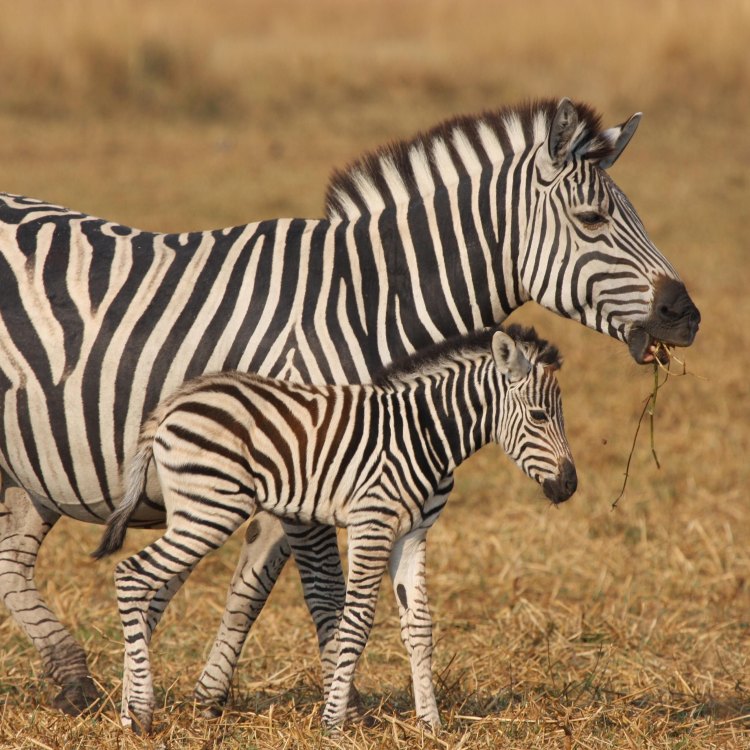
Zebra
- Adult Size: Up to 1.5 meters at the shoulder
- Average Lifespan: 25 to 30 years
- Reproduction: Sexual
- Reproductive Behavior: Polygynous
- Sound or Call: High-pitched barks, brays, and whinnies
- Migration Pattern: Wild zebras do not undergo long-distance migrations
- Social Groups: Herd
- Behavior: Sociable, alert, and highly mobile
- Threats: Habitat loss, poaching, and competition with livestock
- Conservation Status: Vulnerable
- Impact on Ecosystem: Important prey species for predators
- Human Use: Tourism, hunting, and traditional uses
- Distinctive Features: Black and white stripes
- Interesting Facts: Zebras can run up to 65 km/h (40 mph)
- Predator: Lions, hyenas, and wild dogs
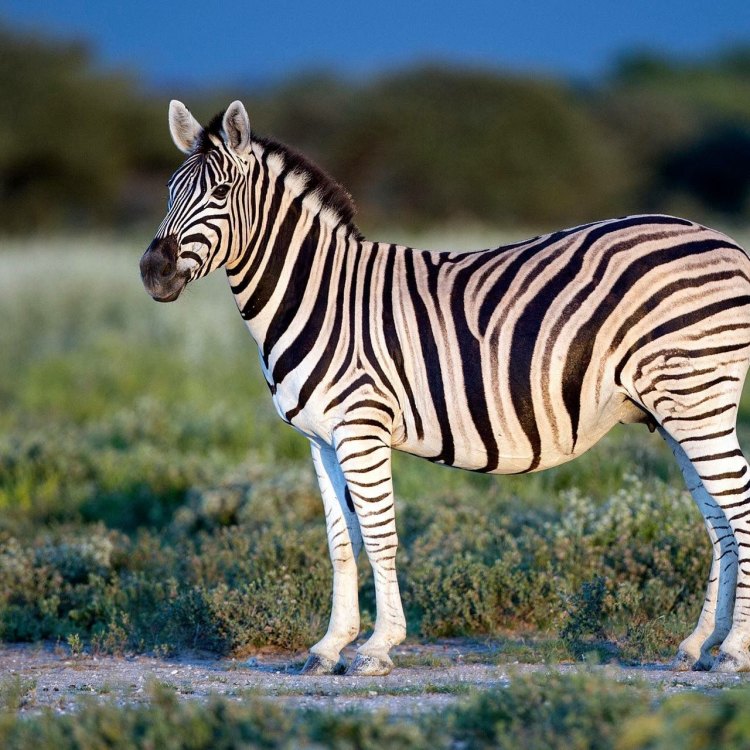
Equus quagga
The Enigmatic Zebra: A Look into the Fascinating World of These Striped Equines
Zebras are undoubtedly one of the most recognizable and iconic animals in the world. Their striking black and white stripes make them stand out in any landscape and capture our attention with their unique beauty. But beyond their distinctive appearance, what else do we know about these enigmatic creatures? In this article, we will delve into the world of zebras, exploring their physical features, behavior, role in the ecosystem, and human interactions.Adult Size and Average Lifespan
The first thing that comes to mind when we think of zebras is their size PeaceOfAnimals.Com. These animals can grow up to 1.5 meters at the shoulder, making them one of the largest species of equines in the world. However, their size varies depending on their subspecies. The Grevy's zebra, found in eastern and southern Africa, is the tallest and largest of all the zebra species, while the mountain zebra, found in southern Africa, is the smallest.
When it comes to their lifespan, zebras can live up to 25 to 30 years in the wild. However, they face numerous threats that can significantly impact their lifespan (more on that later).
Reproduction and Behavior
Zebras are sexual reproducers, meaning they require both a male and a female to reproduce. They have a polygynous mating system, where a single male mates with multiple females within a herd. During the mating season, which typically occurs between January and March, males will compete for dominance and the right to mate with females Zebra Shark.
Like many other equines, zebras are highly social animals and live in herds. These herds consist of a dominant male, several females, and their offspring. These sociable animals are known to be highly alert and constantly on the move, making them difficult prey targets for predators.
Distinctive Features
One of the most fascinating and unique features of the zebra is its black and white stripes. The pattern of these stripes is different for each subspecies, making each zebra's stripes as unique as our fingerprints. While research has yet to determine the exact reason for their striking stripes, there are a few theories. Some scientists believe that the stripes help the zebras blend in with their surroundings and confuse predators by breaking the outline of their bodies. Others suggest that the stripes could also play a role in regulating body temperature and repelling insects.
Sound or Call
In addition to their eye-catching stripes, zebras also have a distinct call that they use to communicate with each other. These calls can vary from high-pitched barks to brays and whinnies. Each sound has a different meaning, such as calling for a lost member of the herd or warning others of potential danger.
Migration Pattern
Unlike many other herd animals, wild zebras do not undergo long-distance migrations. Instead, they stay in a particular area, where they have access to water and food. However, certain subspecies, such as the plains zebra in the Serengeti, do undergo short migrations in search of seasonal grazing areas.
Threats and Conservation Status
Unfortunately, zebras face numerous threats that significantly impact their population numbers and lifespan. One of the most significant threats is habitat loss due to human activities, such as agriculture and land development. As humans continue to encroach on their habitat, zebras lose access to essential resources like food and water.
Poaching is also a major threat to zebras, primarily for their skin and meat. Their skins are highly coveted for fashion and traditional uses, while their meat is consumed as a delicacy in some countries. Poaching not only reduces their population numbers but also disrupts their social structure and breeding patterns.
In addition to habitat loss and poaching, zebras also face competition with livestock for resources. This competition for food and water can negatively affect their health and survival.
Due to these various threats, the IUCN Red List has listed all three species of zebras (plains, mountain, and Grevy's) as vulnerable. While conservation efforts have been made to protect and preserve their populations, continued human activities and illegal trade persist as major challenges.
Role in the Ecosystem
Zebras play an essential role in maintaining the balance of ecosystems. As grazers, they feed on grass and other vegetation, sustaining the health and productivity of grasslands. They also act as prey for the predators in their ecosystem, such as lions, hyenas, and wild dogs. Without zebras, the ecosystem would face imbalances, with potential negative impacts on other species and the environment as a whole.
Human Use
Aside from their role in the ecosystem, zebras hold cultural and economic significance for humans. In areas where they are found, such as Africa, they are an important source of tourism revenue, with countless people flocking to see them in their natural habitat. Zebras have also been traditionally used by some African cultures for their hides and meat, though conservation efforts have led to a decline in this practice.
Zebras may also be hunted for sport, which has sparked debates and controversy over the ethical implications of such activities. While some argue that hunting can aid in conservation efforts by generating revenue for local communities and thus encouraging them to protect the animals, others argue that the killing of zebras for sport is unethical and unnecessary.
Interesting Facts
Aside from their distinctive stripes and high-speed running abilities (they can run up to 65 km/h or 40 mph!), there are many other intriguing things about zebras. For example, their black and white stripes may also act as a form of camouflage at night, making it difficult for predators to distinguish individual zebras. They also have excellent memories, able to recognize and remember each other's distinctive stripe patterns even after long periods apart.
In some African cultures, zebras are also considered to be symbols of free-spiritedness and individuality, often associated with the concept of "being different." This symbolism may have stemmed from the fact that no two zebras have the same stripe pattern, highlighting their uniqueness.
Predators
Zebras may be fast runners, but they still have to watch out for their predators. Lions, hyenas, and wild dogs are among the top predators of zebras. These carnivorous animals rely on zebras and other herbivores for food, making them crucial to the predator-prey balance in their ecosystems. However, as mentioned earlier, human activities, such as habitat loss and poaching, can disrupt this balance, leading to negative impacts on both predators and their prey.
In conclusion, zebras are truly fascinating creatures, with their distinctive stripes, sociable behavior, and significant role in balancing ecosystems. Sadly, they face numerous threats that put their populations and survival at risk. It is our responsibility to take action and protect these iconic animals to ensure that they continue to roam the African savannas for generations to come.
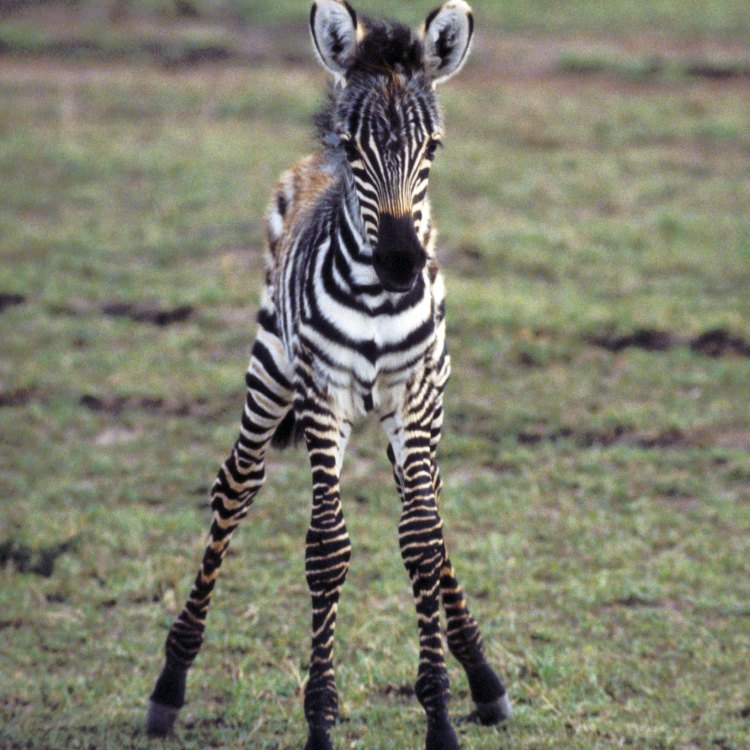
The Beautiful and Mysterious World of Zebras
Disclaimer: The content provided is for informational purposes only. We cannot guarantee the accuracy of the information on this page 100%. All information provided here may change without prior notice.

